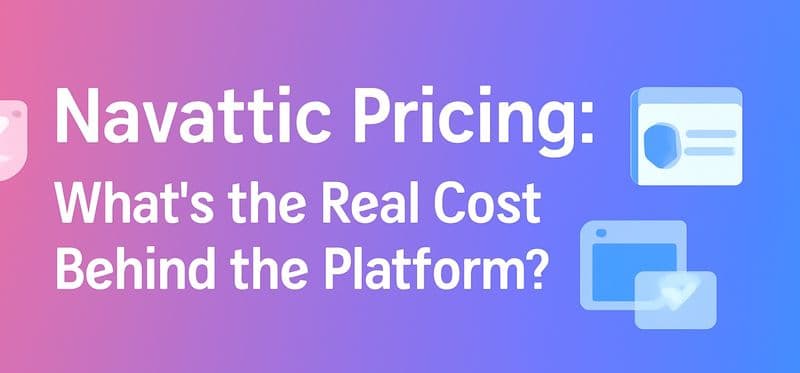Imagine this: A new sales rep joins a tech company, excited to hit the ground running. But within weeks, they feel completely lost—no structured training, no clear guidance on the product, just a flood of information with no real direction. Frustrated and overwhelmed, they even consider quitting.
But everything changes when the company revamps its onboarding process. With hands-on training, mentoring, and regular check-ins, the new hire quickly finds their footing—and soon becomes one of the team’s top performers.
A solid, well-structured onboarding program doesn’t just set new hires up for success—it keeps them engaged and committed. So, how can you build an onboarding process that helps your sales team hit the ground running? Let’s break it down.
What is Sales Onboarding?
Sales onboarding isn’t just a box to check—it’s the foundation for a high-performing sales team.
It’s all about giving new reps the skills, knowledge, and confidence they need to succeed. Instead of just throwing them in and hoping for the best, a solid onboarding process includes hands-on learning, shadowing experienced reps, analyzing customer data, and jumping into real sales calls.
When done right, it not only gets new hires up to speed faster but also keeps your sales strategy sharp and adaptable. After all, great onboarding doesn’t just help new reps—it drives long-term business success.
Why a Structured Sales Onboarding Is Your Ultimate Weapon For Success?
Sales onboarding isn’t just about getting new reps up and running—it’s a roadmap for their success and growth within the company. When new hires understand their roles and the market they’re in, it boosts their sales performance, productivity, and overall customer experience and loyalty.
A structured onboarding program with user-friendly sales tools, targeted training, and continuous support helps new reps get up to speed faster, hit their quotas more efficiently, and stay longer at the company while improving recruitment and keeping the team engaged and satisfied. Here's what it guarantees-
Improve Time to Productivity
Increase in Engagement, Performance, and Commitment
Accelerated Revenue Generation
How To Design a Winning Sales Onboarding Process?

The primary motive behind designing this process is to swiftly guide the new hires from a basic understanding to a thorough command over their respective roles. Each step in this process bears significance in shaping the new hire’s path towards productivity.
Step 1: Pre-Onboarding Preparation
Before the actual onboarding process commences, pre-onboarding preparation is instrumental in setting a strong foundation and properly aligning the clear expectations of the new hires. This involves-
Set clear onboarding goals to track progress.
Setting goals like learning product details in the first week, shadowing a teammate by week two, and hitting a sales target by month two will help both the new hire and manager to track growth.Create a central hub of resources.
Setting up an online space with product info, training videos, and guides that new reps can access to learn about the company and their role will help in the onboarding process.Give access to tools before they start.
Sending login details for tools like Salesforce or Slack a few days before their start date will help them get comfortable with the software early on.Outline their first few days.
Sharing a detailed schedule with meetings, like HR introductions or product demos, will help the new hires to know exactly what to expect and feel prepared.
To add confidence, trust and encouragement to the mix, you can initiate regular communication before their official start date, and drop a simple email or a call, which makes them feel valued. This preparatory phase paves the way for the new sales rep's journey ahead and makes their onboarding experience a lot more streamlined and comfortable.
Step 2: Orientation
The orientation phase is all about giving new sales reps a clear picture of their role and the company culture to create a welcoming atmosphere where they feel comfortable right away on their first day. Introduce them to key team members, managers, and other people they’ll work with across the company—like marketing or customer success teams. This helps them understand how different departments work together toward common goals.
Encourage them to ask questions and voice any concerns so they feel supported. For example, a new rep could have a quick coffee chat with someone from the marketing team to understand better how sales and marketing align. The goal is to help them get familiar with the company structure and the responsibilities of their role, so they feel confident from day one.
Step 3: Basic Sales Training
After orientation, it’s time to dive into basic sales training. This is where new hires learn about things like customer pain points, what makes your product unique, your sales approach, and how to use key tools like your CRM.
Keep the training engaging by mixing it up—use video tutorials, hands-on exercises, role-playing, and even shadowing experienced reps. For example, a new rep could role-play a sales call with a colleague to practice pitching the product.
Remember, this stage can be a lot to take in, so be patient and offer plenty of resources to help them absorb and apply what they’ve learned. A helpful resource might be a quick guide on using the CRM or a checklist of common customer objections to review.
Step 4: Role-Specific Training
Once basic training is done, it's time for role-specific training to offer new hires a deep understanding of their sales role. This is when you focus on things like winning enterprise-level customers or lead generation. Make sure to share clear performance metrics so they know exactly what success looks like.
For example:
Lead Nurturing: Teach them how to follow up with potential customers, like sending personalized emails or setting up regular check-ins to keep the conversation going.
Pitching Products: Share successful sales scripts with examples of tone, language, and key points that have worked in the past, helping them fine-tune their pitch.
Important role-specific data- This can include an introductory guide to the business and its mission, organizational charts outlining the team hierarchy, a primer on core products or services, details about the ideal customer persona, information on the top competitors and plates of successful previous sales pitches
You can compile these resources into a single hub, well categorized and continually updated over time. Here is an example of how these resources can be organized:
Resource Type | Description | Update Frequency |
|---|---|---|
Business Introduction | A detailed guide to your business's mission, values, and culture | Annually |
Organizational Structure | An easy-to-follow organizational chart showing hierarchy and roles | As changes occur |
Product Information | Detailed guides or manuals for your products or services | As changes occur |
Customer Persona | Detailed customer persona sheets featuring demographics and pain points | As changes occur |
Competitor Information | Overview of competitor strengths, weaknesses and differentiators | Annually |
Sales Scripts | Examples of successful sales scripts from your best performers | Quarterly |
By focusing on these specific skills, new hires can better understand their role and what they need to do daily to succeed.
Step 5: Shadowing and Mentorship
With the basics down, it’s time for new reps to level up by shadowing seasoned pros who possess the necessary skills. This step lets them see how experienced reps handle real sales situations—everything from closing deals to handling objections and building customer relationships. Pair each new hire with a 'mentor' who’ll show them the ropes and share some insider tips.
A strong mentorship program with the right support is key to turning rookies into sales rockstars, helping them hit targets faster and understand the company’s strategies on a deeper level.
Step 6: Use a Variety of Sales Training Methods
Using varied training methods, which include an engaging combination of practical learning, theoretical knowledge, and interactive training, keeps things interesting and facilitates retention. These can include:
Comprehensive sales process training covering the details of each step in your business's sales cycle
Interactive role-playing scenarios designed to help practice key sales techniques
Quick shadowing assignments where new-hires can observe experienced sales reps.
Embedding varied forms of practical learning within your onboarding process engages diverse learners and accommodates their styles of learning, making the process effective across the board.
Step 7: Ongoing Support and Development
Onboarding doesn’t stop once new reps start selling on their own. There should be ongoing support as they get the hang of things. Mentors continue to play a key role, offering feedback after they observe the new hire in action.
Set aside time each week or month for a formal check-in where new reps can share challenges, ask questions, and get relevant tips. You can also offer extra training, like advanced CRM tutorials, to fill any knowledge gaps as they progress to keep them on track and ensures they’re always improving.
Step 8: Sales Onboarding Evaluation and Adjustment
The next step is evaluation and adjustment. Once your sales reps are settling in and hitting their stride, it’s time to review how well the onboarding process worked. Look at the metrics and compare them to the goals set at the start. What is the best way to identify what worked? What didn’t? Get feedback from the new hires to see what could be improved. This helps you find any knowledge gaps and make adjustments for future training. By constantly tweaking the process, you’ll create a more effective onboarding experience for every new rep.
Step 9: Make Sales Technology Training Their Second Nature
Mastering sales tech tools is key to boosting performance, so make it a big part of your sales onboarding. Start by teaching new reps the basics of your CRM—how to log activities, track leads, and manage contacts at the right time before diving deeper into advanced features like CRM integrations or custom reporting. This helps them save time and work smarter.
Keep offering support as they learn, answering questions and guiding them through tricky tasks. Over time, they’ll become experts, making their daily sales tasks way more efficient. For example, show them how to automate follow-up emails or generate performance reports directly from the CRM.
Step 10- Measuring the success of your sales onboarding plan
Here’s how to measure the success of your sales onboarding:
Time to First Sale: Track how long it takes for new reps to close their first deal. A quicker first sale means your onboarding is doing its job. For example, if a rep closes a deal within the first month, it shows they're catching on fast.
Ramp-up Time: Measure how long it takes for reps to hit full productivity (like meeting quotas or hitting sales targets). Compare this to industry benchmarks to see if your process is efficient. A rep hitting their quota within three months means they’re ramping up well.
Retention Rates: Keep an eye on how many new hires stick around. If retention is high, it likely means they felt supported during onboarding. For instance, if most of your new hires stay a year or more, your onboarding experience is likely positive.
Mistakes To Avoid in the Sales Onboarding Process
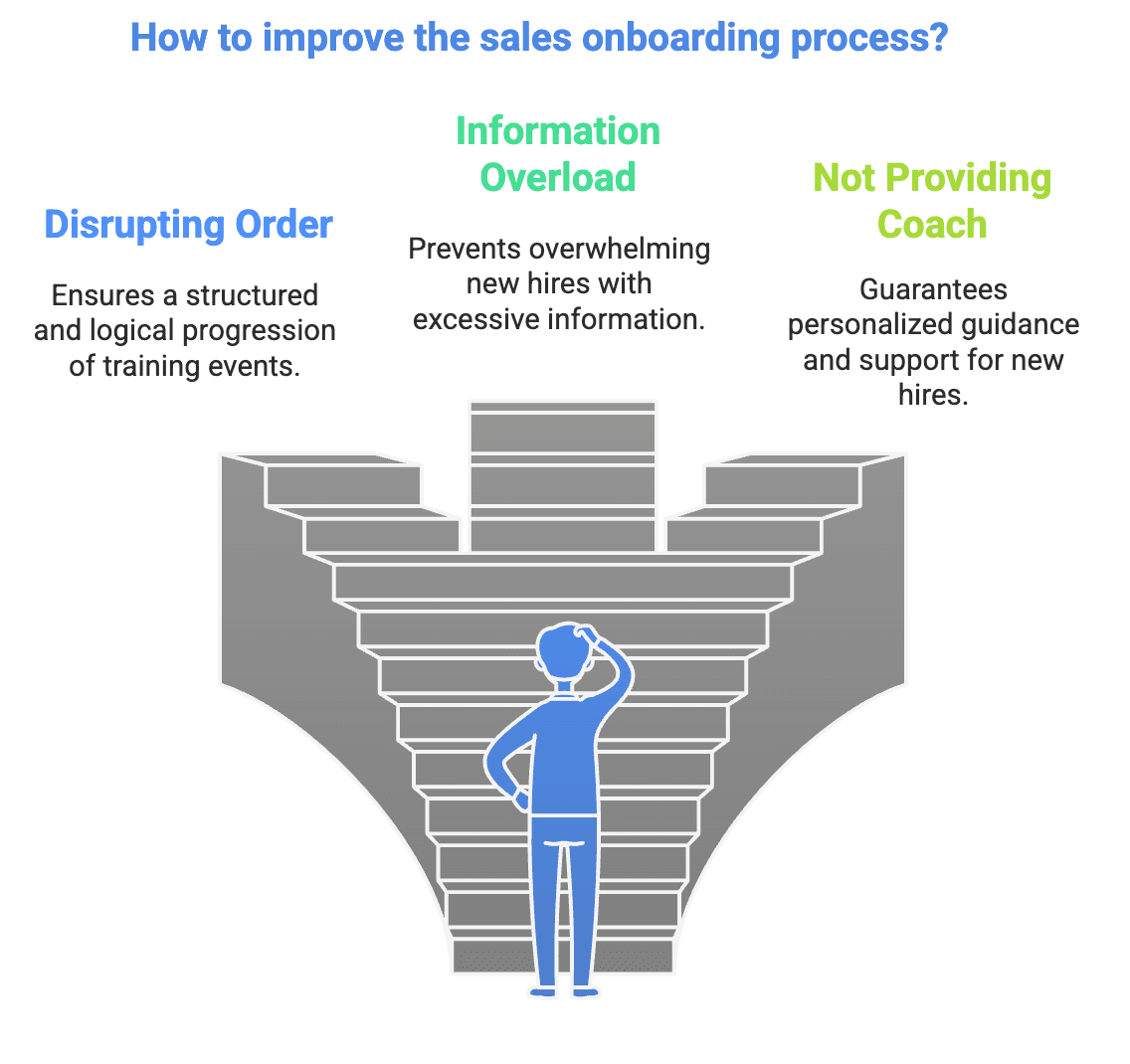
Despite its unmistakable benefits, certain common pitfalls can derail even the best-planned onboarding programs owing to lack of planning, improper structuring, poor resource allocation, or simply ignoring the dynamics of changing sales trends. Let’s take a closer look at some of these common mistakes that organizations tend to make during the sales onboarding process.
Disrupting the Order of Events
One big mistake in sales onboarding? Throwing everything at new hires all at once! It’s like trying to build a house by putting up the walls before laying the foundation—it just doesn’t work.
Start with the basics. Let them get comfortable with core concepts before layering on advanced strategies and tools. When you pace the training right, reps absorb more, feel less overwhelmed, and ramp up faster and smarter.
Information Overload
Dumping too much info on new sales hires is like handing them a fully loaded sales dashboard on day one and expecting them to close deals instantly. It’s overwhelming, and nothing sticks.
Instead, think of onboarding like a well-structured sales pipeline—start with the basics, like CRM navigation and core sales tactics. Then, gradually introduce advanced strategies, such as multi-touch outreach or competitor positioning, fostering a culture of continuous improvement. When learning happens in stages, retention improves, confidence grows, and reps start hitting targets faster.
Not Providing a Dedicated Coach
Every new rep needs a mentor to guide them through the early days. Without this support, they can feel lost.
A dedicated coach, whether it's a senior rep or manager, offers real-world insights into sales strategies and company culture, answers all their questions, and serves as a central point of contact to ensure the new hire feels part of the team. This personal guidance accelerates the learning process and builds confidence.
SmartCue: The Smarter Way to Onboard Your Sales Team
Effective sales onboarding is all about equipping new reps with the right mindset, skillset, and toolset—and SmartCue makes it seamless.
Mindset: SmartCue’s interactive demos help reps see how their role drives company success, boosting motivation and ownership.
Skillset: With role-specific learning paths and real-world training modules, reps can practice, refine, and master key sales techniques.
Toolset: SmartCue simplifies tool adoption with guided tutorials, ensuring reps quickly get up to speed on essential sales platforms.
With SmartCue, sales onboarding isn’t just efficient—it’s engaging, personalized, and built for success.
Here's a step-by-step guide
Step 1- Log In and Set Up Your Account
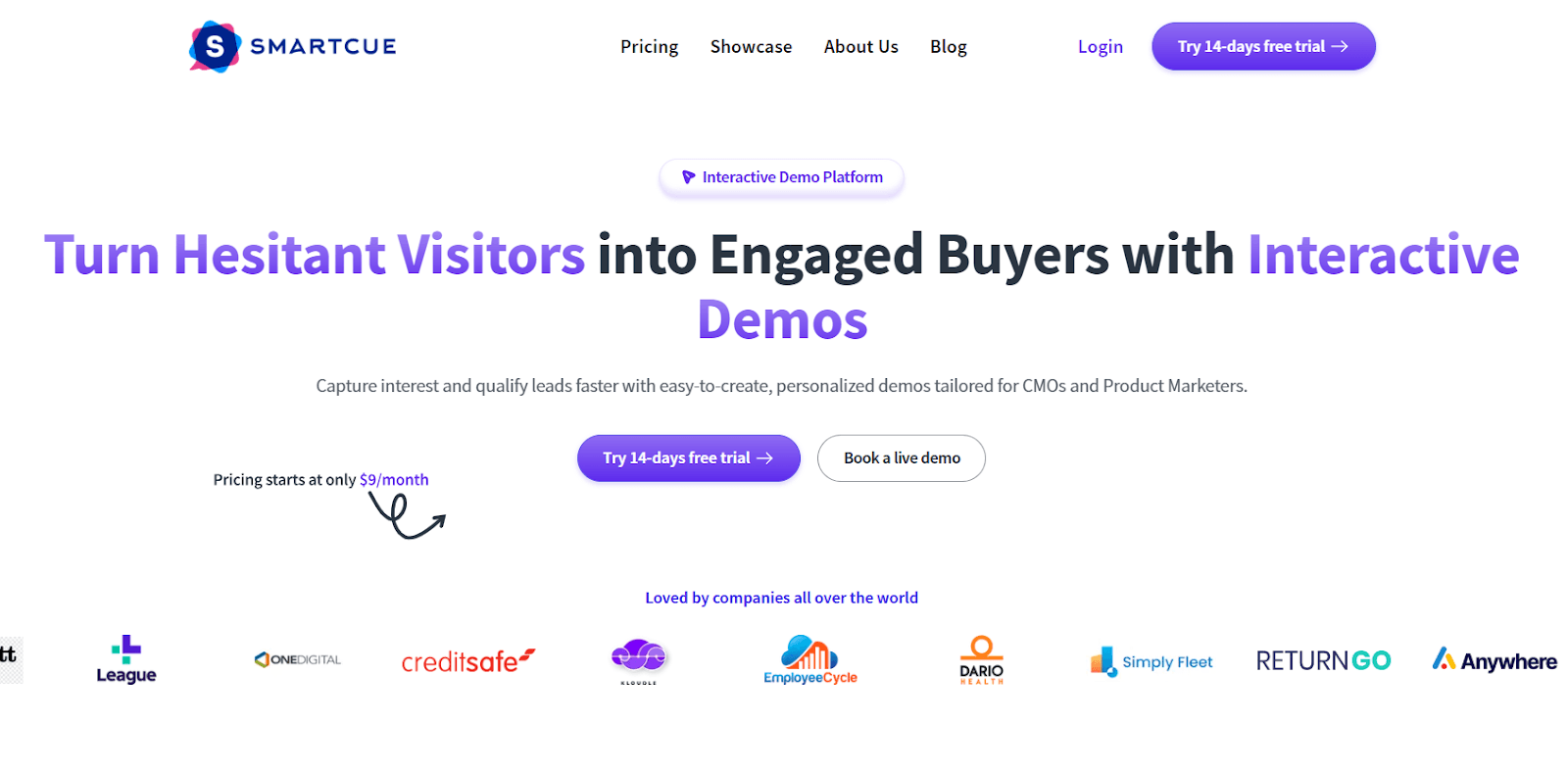
Start with a free trial and explore SmartCue’s intuitive interface.
Step 2- Build the showcase
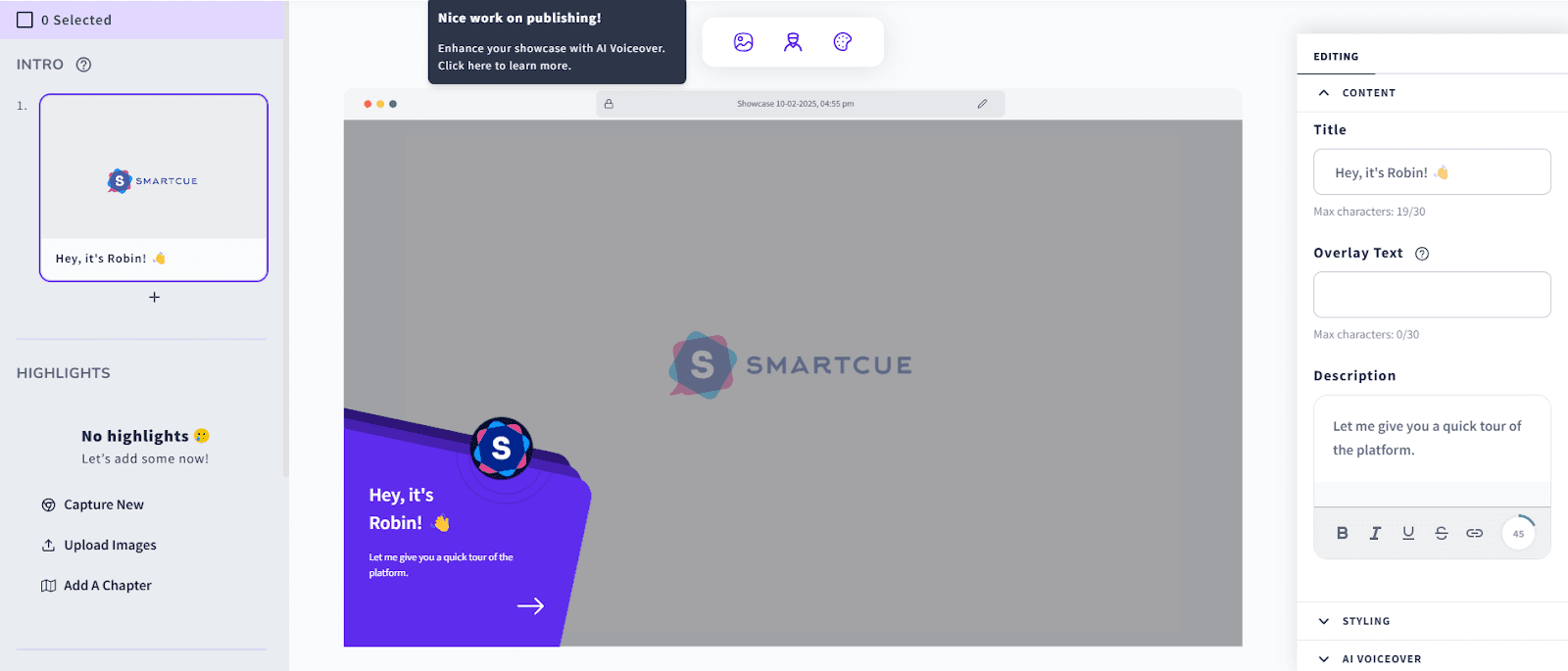
Add text descriptions and enhance your showcase with integrated tools.
Step 3- Publish it
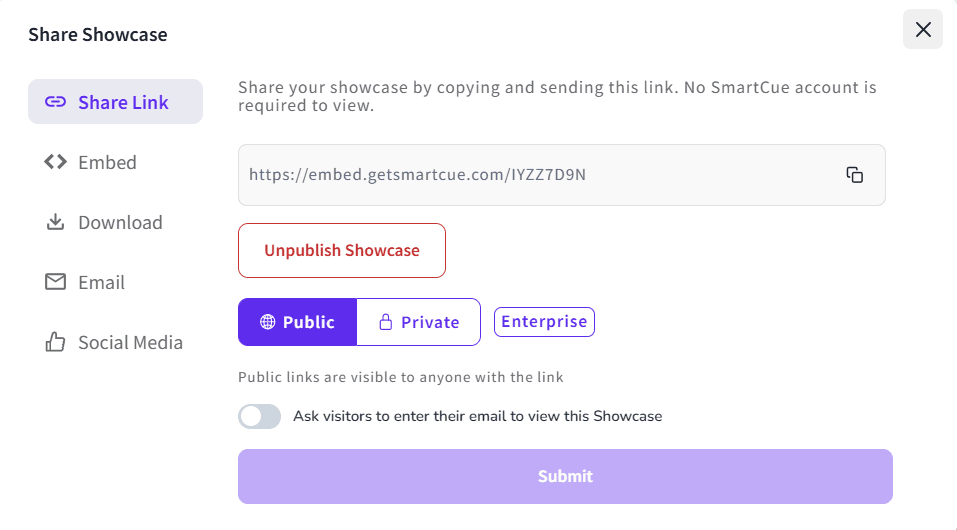
Now, you are just a step away from closing your deals with the most efficient demos.
Frequently Asked Questions
How long should a sales onboarding program take?
An optimal sales onboarding program typically aligns with the average sales cycle prevailing in your niche, incorporating effective sales management practices. that help achieve company goals. However, depending on various factors like team size, industry standards, and product complexity, the onboarding process's length may vary.
How can I measure the success of my sales onboarding program?
The success of your sales onboarding program can be evaluated through indicators like shorter ramp time, performance metrics, increased sales, improved customer satisfaction rates, enhanced job satisfaction, greater employee engagement and retention rates, and overall better productivity among new hires.
How can sales onboarding software help streamline the process?
Sales onboarding software allows for structured, consistent, and automated training which facilitates ease of learning for new employee hires. It offers systematic access to vital training materials, optimizes progress tracking, and provides a platform for active feedback, thus streamlining and making the onboarding process more manageable.
What are some effective techniques and strategies for sales onboarding?
Effective sales onboarding can incorporate methods such as simulations, role-playing exercises, pairing up with mentors, interactive seminars, hands-on training using sales tools, and ongoing feedback sessions. A combination of these techniques ensures an engaging and comprehensive onboarding experience.

